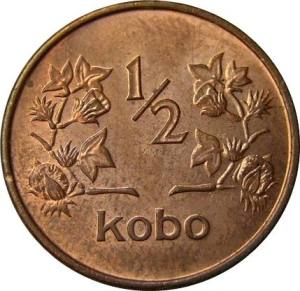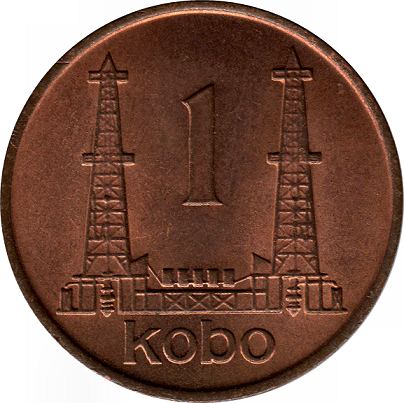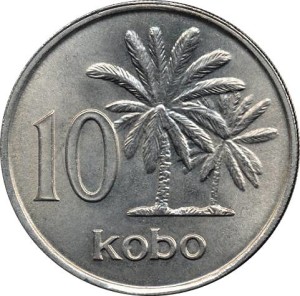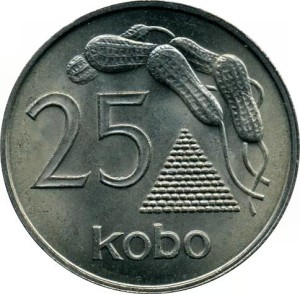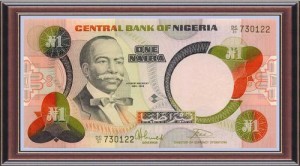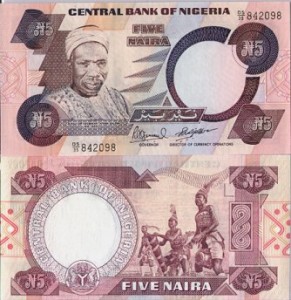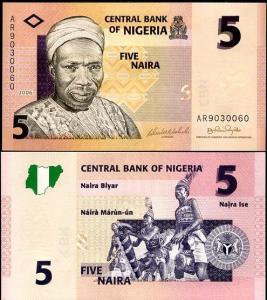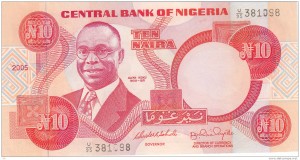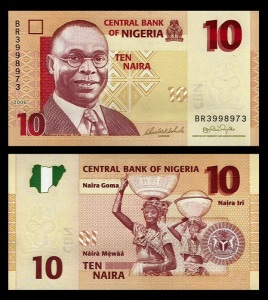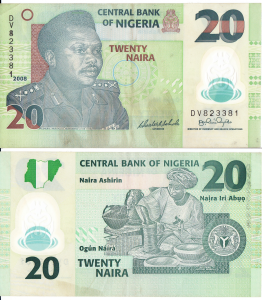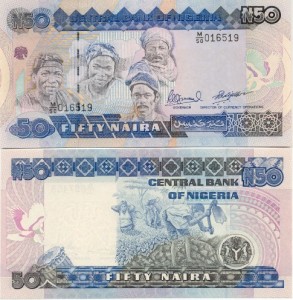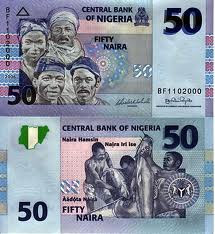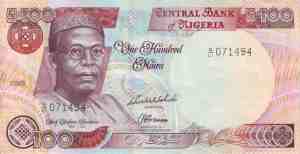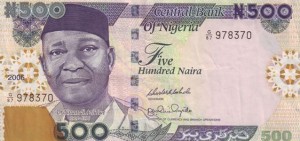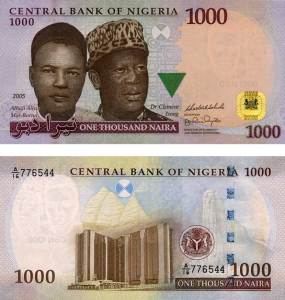
Currency Of Nigeria
The Naira (₦) is the currency of Nigeria. Each Naira is equal to 100 Kobo. The Kobo is rarely used in Nigeria due to inflation. One US $1.00 is equal to about ₦470. Below are pictures of the ₦10, ₦20 and ₦50 notes. ❯❯ Read History of Nigeria ❯❯ Read About Nigerian Personalities

Most of the notes have pictures of notable Nigerians. General Murtala Muhammed is on the ₦20 and Alvan Ikoku is on the ₦10 note.
 |
History of Nigeria's Currencies
Introduced in 1973, the currency currently used in Nigeria is the Naira (₦) and Kobo. Prior to this, the country used Pounds as the legal tender. Naira has the sign ₦ ” while the kobo is signed ”K” .
The Kobo
In 1973 the kobo had five denominations namely 1/2k, 1k, 5k, 10k and 25k. In 1989 50K and ₦1 notes were changed to coins. In recent times the kobo coins have been phased out as the value can no longer purchase items.
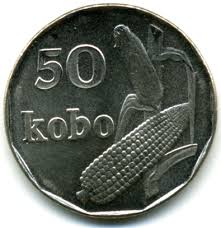
50 kobo. Front: Maize, Reverse: Coat of arms. Introduced – 1991
The Naira
In 1973, the Naira note was introduced with the following Denominations – ?1, ?5 and ?10. Some notes were subsequently phased out, others redesigned and some new notes were introduced.
President Goodluck Jonathan unveiled a new 100 Naira note on the 12th of November, 2014 to commemorate Nigeria’s 100 years of existence. In front, the new note has the same portrait of Chief Obafemi Awolowo as the existing note but has a new color scheme and increased security features, including “One Nigeria, Great Promise” in microprinting. On the back it features traditional dancers as well as a QR code which launches a website about Nigeria’s history when scanned.
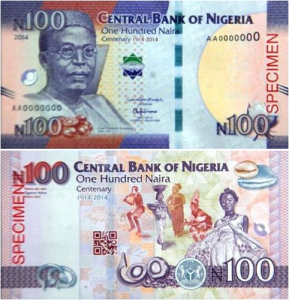
Centenary 100 naira note. Introduced – November 2014
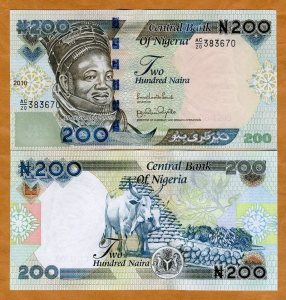
200 Naira note. Introduced – 2000
Write Your Comment
Search
Nigerian Government
The Federal Republic of Nigeria is governed in accordance with the provisions of a Constitution.In 1914 the Protectorates of Southern and Northern Nigeria were amalgamated with the Colony (Lagos) by Lord Lugard to form what is now known as Nigeria.
Nigerian Music
The music of Nigeria includes many kinds of Folk and popular music, some of which are known worldwide. Styles of folk music are related to the multitudes of ethnic groups in the country, each with their own techniques, instruments, and songs. Listen to music of Nigeria.

